This sounds like one of those harmless childhood dares! But I have often wondered this myself and I’d be surprised if it hasn’t crossed every tea drinker’s mind at some point. So did I dare to try it… well yes … of course. I kind of eat tea leaves all the time and this post will explain why that is.
If we’re addressing this question properly, then actually, there are a number of variations to the whole scenario of eating tea leaves. So I’ve explored this further and tried to get some proper answers on the whole thing.
So Can you eat the tea leaves in a teabag? You can eat tea leaves, some teas like Matcha are consumed, and tea is often used in culinary pursuits. In most circumstances, it’s fine to eat tea leaves to a reasonable level. You will likely not gain greater benefits than drinking the tea and you should not consume large amounts.
Also, what do you gain from it? And what are the risks? Let’s explore it further.
What Tea Leaves Do You Want to Eat?
What type of tea is it you are thinking of eating? And in what form? Is it the whole tea bag? The tea leaves straight from the tea bag, the tea bag leaves added to water, is it boiling water? Loose leaf tea? Matcha? Based on which options you’re looking at I think I’ve managed to cover most of the options you’re considering below…
In all honesty, whilst we’re looking at the science of whether you are able to safely eat tea leaves and what benefits you might get. I can tell you it’s not that pleasant an experience.
Tea leaves from a tea bag do not actually taste that nice, and moreover, the consistency of tea leaves is just not good at all and without copious amounts of fluid to wash them down, they’ll stick around for a while. Don’t be surprised if you need a tooth-pick afterward!
When Eating Tea Leaves Is the Norm
Eating tea is not uncommon. There are some occasions when the tea is prepared for the purpose of eating. Inhabitants of Myanmar, (formerly Burma), actually do eat tea leaves as their own special tea. It’s called Lahpet.
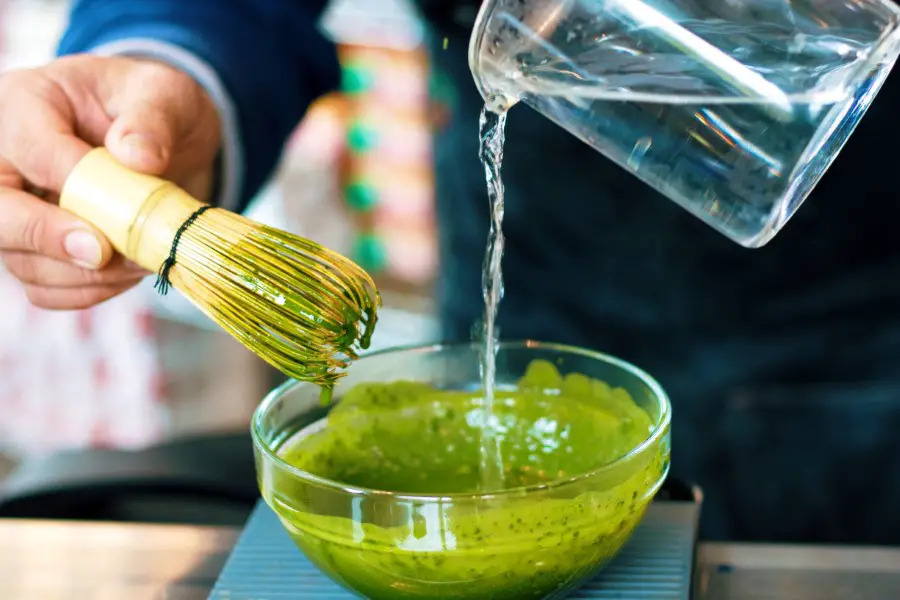
If you’ve had matcha tea before then you’ll know that matcha is a type of green tea (and now even white tea), traditionally used in a Japanese Tea Ceremony. Here you absolutely do ‘eat’ a fine ground powdered version of green tea – but in a beverage form.
The powdered matcha is added to warm water and whisking vigorously to blend the powder into the drink. Then you drink it.
The main difference between matcha and most other teas is that much of the powder is dissolved into the water, or end up as just fine particles that would pass through your system really easily. So that’s all fine then!
We’ll look at more ways of making tea edible later in the article.
Eating Black Tea Leaves out of the Tea Bag
Let me first address that eating a whole tea bag must surely be a
So on to the leaves themselves, whilst this is possible, we have to remember a few things about tea leaves from a tea bag.
Tea leaves in a regular box of tea bags are often called ‘fannings’ or ‘dust’. sometimes these are even thought to include the ‘sweepings’ from the factory floor. They’re produced by breaking up highly oxidized tea leaves to a greater extent. This has the effect of providing a greater surface area across all the leaves.
The result of this is extra processing is the leaves will more quickly yield both the tannings – which provide the sharpness in the taste of tea and the polyphenols and other enzymes and good bits that provide the flavor and benefits.
However, it’s the immersion in hot water that is the catalyst for this chemical process, so eating them whole will miss out much of that release of goodness.
Adding Black Tea Leaves from a Tea Bag to a Cup
This will work, in
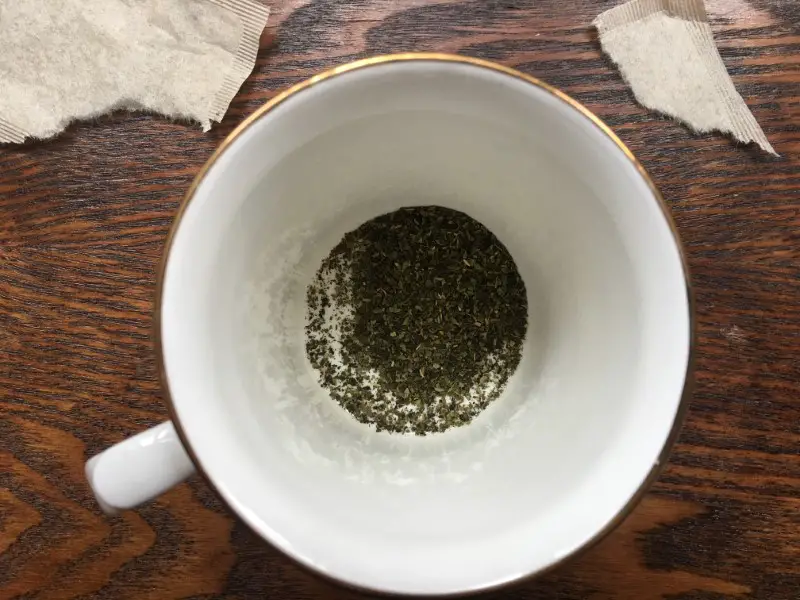
But in ‘olden times’ this is how people drank their tea. This is how tea leaf reading began. It wasn’t mandatory to use a strainer, it’s simply that in modern times we’ve found easy ways to prevent tea leaves being added and, tastes have changed – at least in the western culture. We’ll talk more about the Eastern cultures later.
One thing to note though is that part of the issue with tea bags (aside from the plastic content) is that they prevent much of the tea from moving around. Tea expands when immersed in hot water, so at least adding them to a cup does allow for this expansion.
The major downside to this is, although much of the leaf content will sink to the bottom, and remain there. Every mouthful of tea will likely contain some tea leaves. Moving the cup around will disturb more each time too.
When tasting, these ‘bits’ can be extremely distracting. Instead of noticing the taste, you will really only notice the unpleasant leaf particles floating around your mouth! But you can have some fun reading the leaves afterward!
Adding Black Tea Leaves from a Tea Bag to a Teapot
This is fairly straightforward to answer. Actually, if you’re using a teapot and a strainer then you’re really only brewing tea like the old fashioned early 20th-century approach. Using a teapot, ‘fannings’ of loose leaf tea and a tea strainer.
If you decide not to use a strainer, well then you’ll really only get the same effect as adding leaves to the cup directly. See my previous answer.
Eating Loose Leaf Tea
A slightly different matter here. In fact
Recipes
If you visit many places in the East, they will eat tea as a matter of course, either steeped leaves or in other prepared or cooked forms. There are numerous cookbooks with recipes for eating prepared green tea, like green tea salads, and stews. Like this cookbook on Amazon.
So yes, you can eat – or at least properly prepare and eat Green and other teas. See further down for a list of better ways to eat tea leaves.
Benefits of Eating Loose Leaf Tea
Some of the benefits of this is that the additional antioxidants that the tea can provide ‘from source’ rather than steeped.
There is also the caffeine, be prepared for a potentially greater hit of caffeine from this method.
Whole green tea leaves – as opposed to steeped leaves, have over 90 times the amount of catechins – health-giving antioxidants than steeped tea, so the boost in vitamins can be very beneficial.
Pesticides in Loose Leaf Tea
The downsides are the possibility of ingesting pesticides. Pesticides are not soluble, so steeping has no effect. However, if you ingest the whole leaf then you are potentially digesting pesticides along with it. To combat this ensure your leaves are organically grown.
Bacteria in Loose Leaf Tea
One other thing to look out for is bacteria. If you do intend to consume recently steeped leaves, then be sure not to leave them too long. Bacteria
Like any other food matter, leaving them too long can encourage bacterial growth. If you must wait, then keep them in a hygienic, sealed container and in the fridge. Or freeze them. See here for how to store tea.
Eating Herbal Tea
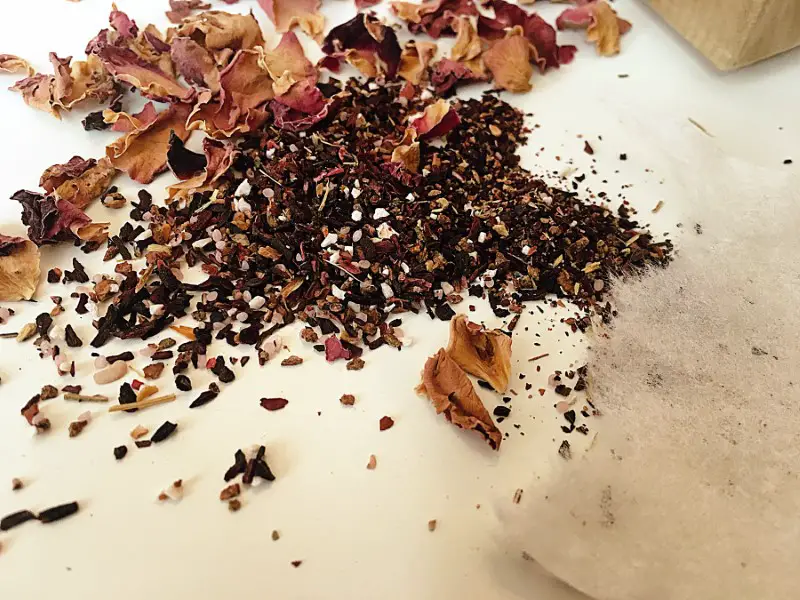
Herbal plants in cooking seem to be used very much like you would with your usual herbs and spices. There are numerous cookbooks around on how to prepare, cook and eat herbal and green and other tea recipes. The most relevant one I’ve seen is this one on Amazon.
Reasons Not to Eat Tea Leaves
Let’s not forget there’s a thing in the world called pollution. All plant life is affected by pollution even down to the effects of simple ‘acid rain’ as Wikipedia explains.
It’s not surprising then that tea is the same. Traces of lead and other heavy metals have been found (
If however, you consume tea of any form, in any great quantity, then naturally the risks become greater. You may want to consider how much tea you consume, but don’t let that put you off the many recipes you can achieve and still remain healthy, and which outweigh the smaller issues.
Better Ways to Eat Tea Leaves
I mentioned recipes before, and there are plenty enough to add to your culinary skills. Here’s a list of some with a few descriptions to whet your appetite.
Lemon shortbread Earl Grey tea cookies, that’s right! Or if not Earl Gray, then consider acerola cherry & fig tea Cookies, or even just straight Tea Shortbread.
A common eastern food recipe made from full, not ground tea leaves is a dish called L
Like Ice cream? Like Tea? Have Tea Ice cream! A soft ice cream milk and sugar base with added H
Cook using the tea liquor! It can be added to milk, batter for cake making, buttercream and a variety of sauces.
Here are a few more options I’ve found…
- Masala Chai Flavoured Porridge
- Tea flavored Pesto
- Add to your boiling pasta pot
- Add to cream for a tea flavored dessert
- Ground Tea on your frying fish
- As an added seasoning in your wok.
Final Words
Once again the world of tea opens my eyes to what can actually be done. So forget the ‘schoolboy eat the tea bag dare pranks’. It’s definitely overshadowed by the fantastic variations and benefits I’ve found to be out there. I’ll be trying some of the recipes and cooking tips out for sure.
More and more I’m learning that tea has so many uses. Yes, there are the usual global issue downsides, but if we were scared off by every end of the world health threat we’d frankly never eat anything. I say go for it and try some of this stuff out.
That’s it. Thanks for reading and if you like it then please do share it.
Check out my Tea Sommelier Course below to quickly become a tea connoisseur! And be sure to check out my tea wares if you’re a tea lover, or if you’re starting your tea journey. I’ve selected some things for starters and I’ll be including the tea cookery book for the tea explorers too!
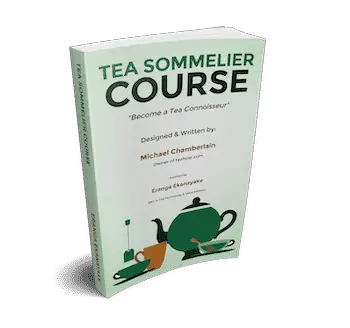
Take the fast track and become a tea connoisseur
Whether for enjoyment or considering a career as a tea sommelier. This course has everything you need to enhance your tea knowledge and tea-tasting skills.
This course keeps it simple with step-by-step tea tasting and easy reference guides
For pleasure, or as a precursor to a career in the tea industry. Find out what tea sommelier actually does, their career paths, and what they earn.

Find out more about the Teahow Tea Sommelier Course!
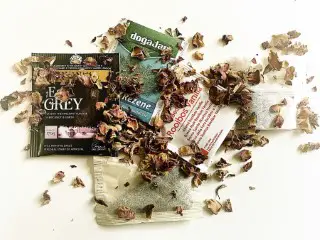
Thank you very much for the feedback!
My Family Loved it. I am definitely sharing this recipe and this website with my friend. Hope they also love it. Thank you again for sharing such a great recipe.